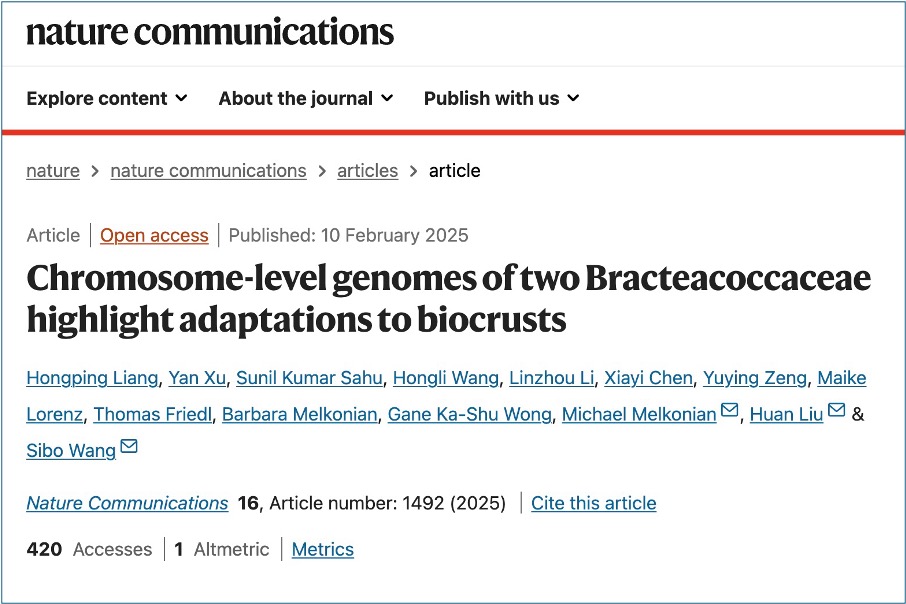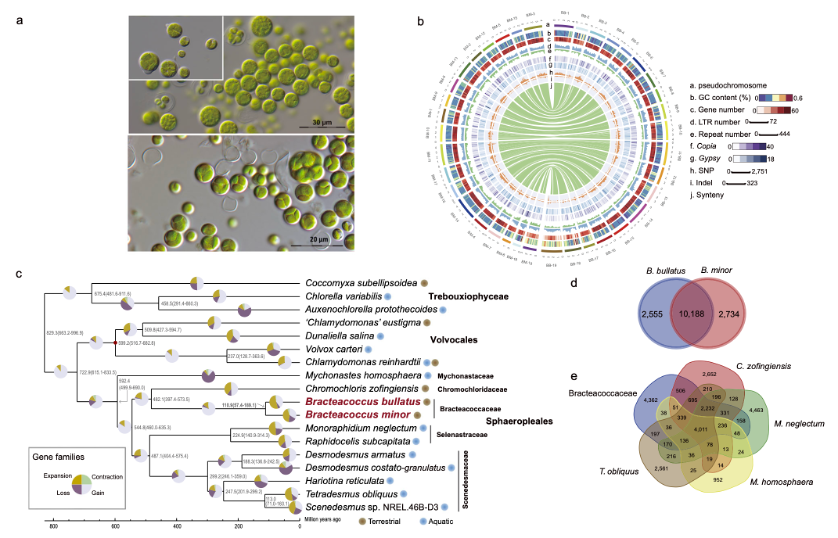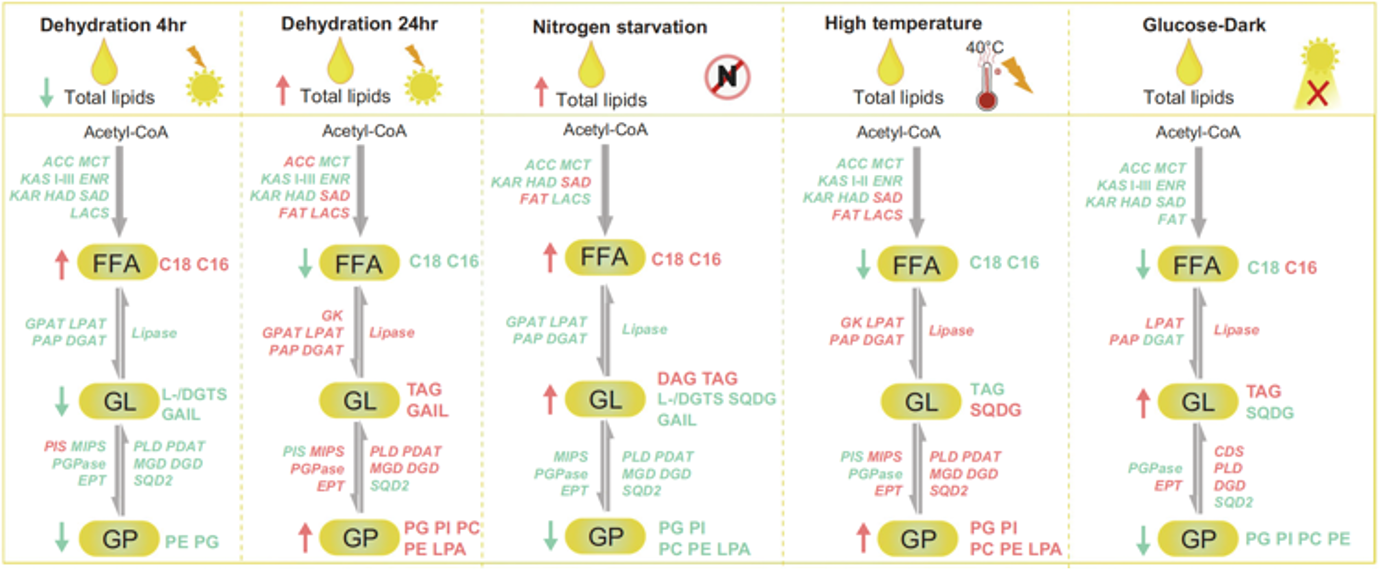Soil crusts, often called the “skin of the desert,” cover more than 40% of Earth’s land surface and play essential roles in preventing erosion, improving moisture retention, and stabilizing vulnerable terrain. These crusts are made up of diverse organisms, including bacteria, fungi, and a group of “soil crust green algae” belonging to the genus Bracteacoccus. Although researchers have long recognized these algae for their ability to withstand severe conditions such as dryness, extreme temperature fluctuations, and nutrient-poor soils, the full genetic basis behind their survival has remained elusive - until now.
In a new study published in Nature Communications, a research team from BGI-Research and the Max Planck Institute reports the first-ever chromosome-level assembly of two Bracteacoccus species (B. bullatus and B. minor), using BGI’s DNBSEQ sequencing platform. This milestone not only pinpoints how these algae thrive under environmental stress but also highlights their potential as a resource for desert restoration and broader biotechnological applications.
 The study “Chromosome-level genomes of two Bracteacoccaceae highlight adaptations to biocrusts” was published in Nature Communications.
The study “Chromosome-level genomes of two Bracteacoccaceae highlight adaptations to biocrusts” was published in Nature Communications.
One of the most striking findings from this research is the large-scale expansion of genes associated with adaptations to harsh environments, including nitrogen metabolism, fatty acid elongation, and the biosynthesis of cuticular or wax-like substances that reinforce cell walls. By comparing these soil crust algae with other green algae, scientists discovered that B. bullatus and B. minor also harbor over two hundred genes acquired through horizontal gene transfer from bacteria and fungi, potentially aiding in UV protection, osmotic regulation, and antioxidant production. These genetic innovations are thought to underpin the algae’s ability to endure steep temperature swings and limited nutrients in desert soils. Additionally, the study illustrates how these algae secrete extracellular polysaccharides to bind loose sand grains into stable crusts, thereby shielding underlying soils from further erosion and enhancing their capacity to support plant growth.
 Genomic and Evolutionary Insights into Biocrust Green Algae.
Genomic and Evolutionary Insights into Biocrust Green Algae.
Beyond the discovery of their stress-related genes, the researchers applied a multi-omics approach—integrating transcriptome, proteome, and metabolome analyses—to investigate the algae’s distinctive lipid metabolism under challenging conditions. They found that these soil crust green algae can flexibly shift between polar membrane lipids and neutral storage lipids, ensuring both structural integrity and reliable energy reserves even as environmental conditions fluctuate. This type of metabolic plasticity, generally absent in water-dwelling algae, points to a unique adaptation for terrestrial life. From a practical standpoint, this discovery could fuel efforts to engineer or select crops and microorganisms better equipped to withstand drought, salinity, and poor nutrients, illuminating fresh possibilities in ecological restoration, agricultural innovation, and even renewable biofuels.
 Lipid Metabolic Regulatory Mechanisms in Soil Crust Green Algae
Lipid Metabolic Regulatory Mechanisms in Soil Crust Green Algae
By revealing the genetic foundation of B. bullatus and B. minor, this latest study not only enriches our understanding of how “desert skin” organisms adapt to some of the planet’s most unforgiving terrains but also provides a powerful genetic toolkit for tackling the growing challenges of desertification, climate change, and sustainable resource management in the decades to come.
The work is part of the 10,000 Plant Genomes (10KP) Project, in which BGI focuses on uncovering how algae transitioned from aquatic to terrestrial environments and how early land plants evolved to cope with limited water availability.
Previous breakthroughs by BGI in this domain have shed light on an entirely new branch of green plants (“Prasinodermaphyta”) and deciphered the earliest land plant genomes—findings that have appeared in top journals such as Nature Plants and Nature Ecology & Evolution. In parallel, BGI has conducted systematic studies on soil improvement and plant–microbe interactions, including a 2022 publication in Nature Communications that characterized how millet genotypes shape root microbiomes, and a 2023 report in Microbiome linking soil nutrients and salt-tolerant microbes to enhanced production of active components in medicinal plants.
The study can be accessed here: https://www.nature.com/articles/s41467-025-56614-2



